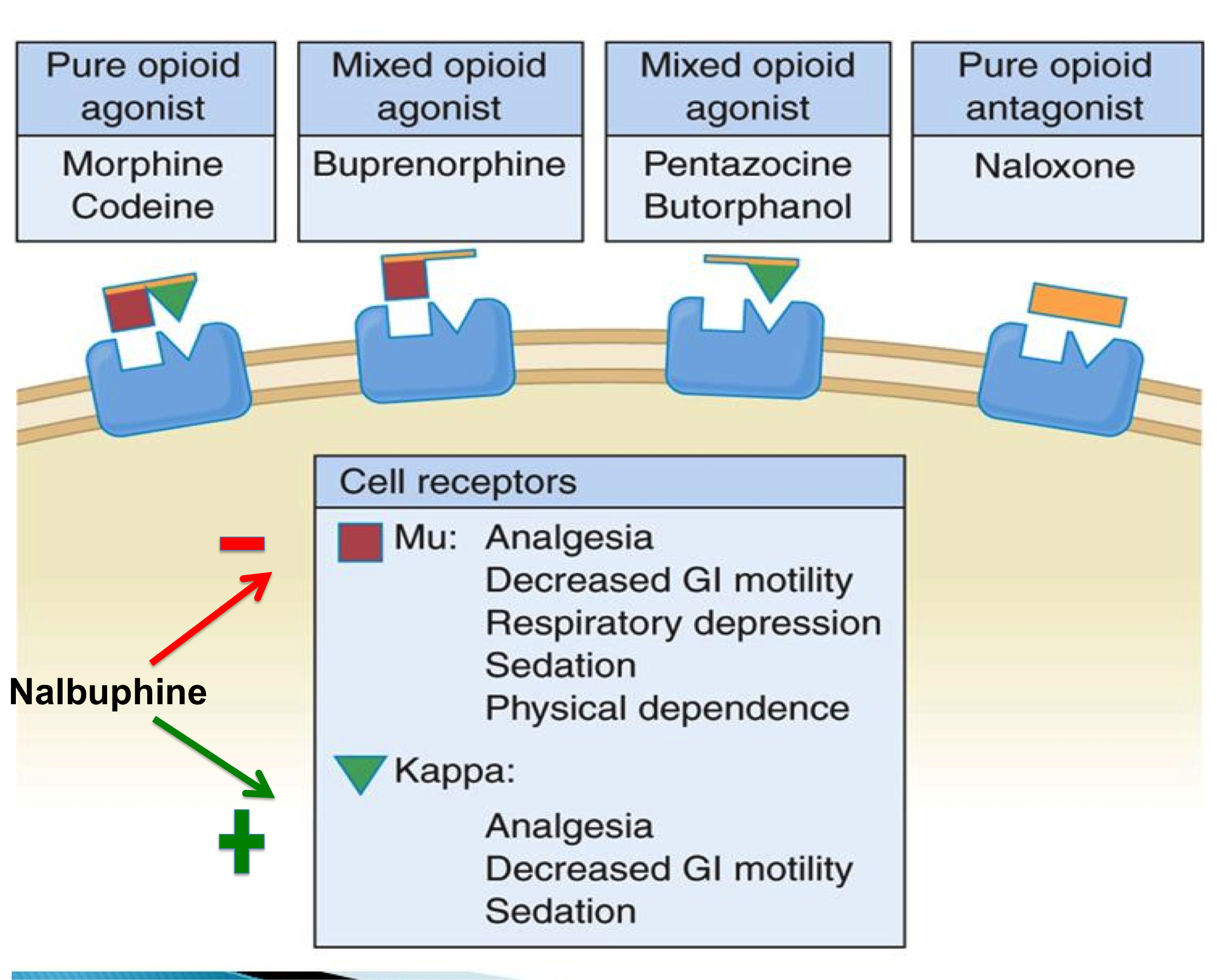Case Presentation: Urinary retention affects 4.5% and 0.07% of hospitalized men and women, respectively (Verhamme et al, 2008). The causes vary widely; however, it may occur as a result of opioid use. Opioid-induced urinary retention is under-reported in literature. When opioid induced urinary retention occurs, there is the dilemma of achieving resolution, without reversing pain control. Here, we report a case of opioid-induced urinary retention that responded to treatment with Nalbuphine. Nalbuphine is a potent opioid analgesic, which is a kappa agonist and a mu antagonist. To our knowledge this is the only medical case where Nalbuphine has been used for opioid-induced urinary retention.
A 59 year-old male was transitioned to hospice care following diagnosis of hepatocellular carcinoma. His abdominal pain was controlled by Hydromorphone 2mg IV q2 hrs and 4 mg PO q2 hrs as needed. Other options for pain control were contraindicated due to his liver disease, or intolerable side effects. While on this regimen, the patient developed new-onset urinary retention that failed conservative treatment with α -1 blockers and eventually required frequent intermittent urinary catheterization.
After reviewing the literature, the use of Nalbuphine was noted in one surgical patient, which reversed opioid-induced urinary retention (Malinovsky et al, 2002). The patient was administered 10mg of IV Nalbuphine (off-label use). His urine output improved within 6 hours of receiving Nalbuphine from 50 mL to 450 mL, which was consistent with its duration of action. In addition, the patient remained pain-free while on Hydromorphone.
Discussion: Urinary retention is a common symptom seen in hospitalized patients. Opioid-induced urinary retention should be included in the differential diagnosis especially with the current opioid epidemic and inpatient opioid use in the hospital.
The mechanism of Opioid-induced urinary retention is multifactorial and has been hypothesized to: 1) Decrease the sensation of bladder fullness by partially inhibiting the parasympathetic nerves that innervate the bladder. 2) Increase the tonicity of the urinary sphincter via sympathetic over stimulation, which leads to increased resistance in the outflow tract of the bladder.
Nalbuphine is an analgesic drug that acts on the kappa (agonist) and mu receptors (antagonist) (as shown in Figure A). Its primary use is for preoperative analgesia and off-label use for morphine-induced pruritus. Nalbuphine differs from other opioid antagonists (eg: Naloxone) by preserving the opioid analgesic effects through its Kappa activity despite it being a mu receptor opioid antagonist.
Conclusions: This case highlights the importance of considering opioid-induced urinary retention as part of the differential diagnosis in hospitalized patients receiving opioids. Nalbuphine, is an opioid agonist-antagonist that can be used to reverse urinary retention while preserving pain control.
Malinovsky JM, Lapage JY, Karam G, et al. Nalbuphine reverses urinary effects of epidural morphine: a case report. J Clin Anesthesia. 2002 Nov; 14(7): 535-8.
Verhamme KM, Sturkenboom MC, Stricker BH, Bosch R. Drug-induced urinary retention: incidence, management and prevention. Drug Saf. 2008;31(5):373–88.

